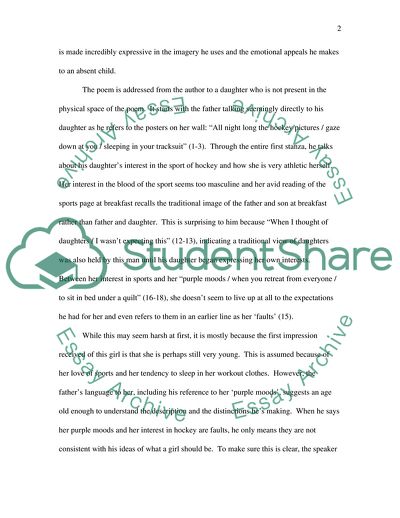To a Sad Daughter Essay Example | Topics and Well Written Essays - 1500 words. https://studentshare.org/literature/1715013-poem-interpretation
To a Sad Daughter Essay Example | Topics and Well Written Essays - 1500 Words. https://studentshare.org/literature/1715013-poem-interpretation.


